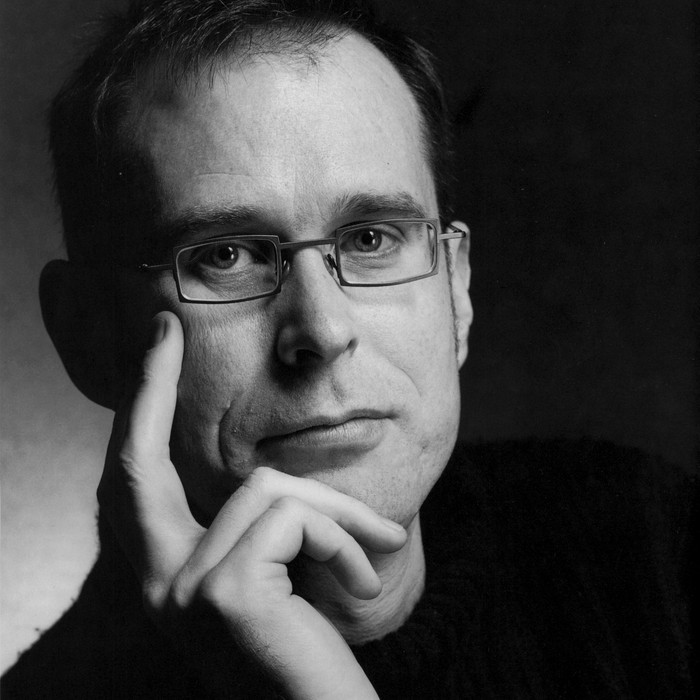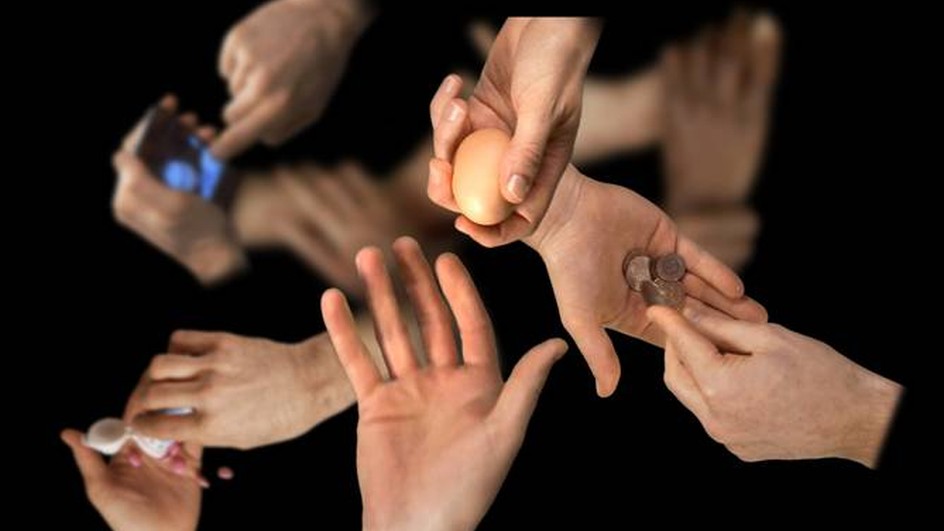
Visiting artist professor
2011 - 2012
David Rokeby
Born in 1960 in Tillsonburg (United States)
David Rokeby has been creating interactive sound and video installations since 1982. His early work Very Nervous System (1982-1991) is acknowledged as a pioneering work of interactive art, translating physical gestures into real-time interactive sound environments. Very Nervous System was presented at the Venice Biennale in 1986, and was awarded Austria's Prix Ars Electronica Award of Distinction for Interactive Art in 1991.
Several of his works have addressed issues of digital surveillance, including Watch (1995), Taken (2002), and Sorting Daemon (2003). Taken was exhibited at the Witney Museum of American Art in New York in 2007.
Other works engage in a critical examination of the differences between human and artificial intelligence. The Giver of Names (1991) and n-cha(n)t (2001) are artificial subjective entities, provoked by objects or spoken words in their immediate environment to formulate sentences and speak them aloud.
Rokeby's installations have been exhibited extensively in the Americas, Europe and Asia. He has lectured widely, and has published two papers that are required reading in the new media arts faculties of many universities.
Rokeby has received the Governor General's Award in Visual and Media Arts, the Prix Ars Electronica Golden Nica for Interactive Art (for n-cha(n)t) and the first BAFTA award for interactive art from the British Academy of Film and Television Arts. He has represented Canada at the Venice Biennale of Architecture with Seen (2002) and at the São Paulo Bienal in Brazil (2004).
Recent projects include a number of highly acclaimed large-scale public artworks, an installation evoking the presence of Marshall McLuhan in the coach house where he worked and a new interactive sound installation entitled "Dark Matter" commissioned by Wood Street Galleries in Pittsburgh. He is currently preparing a new work for the opening of the Ryerson Gallery and Research Centre in Toronto in 2012.
Camera as Projector
In the ancient theory of vision called "extramission", the eye projects rays that touch the things that are seen. We now tend to think of our eyes as passive receptors, but it is abundantly clear that there is little passive about visual perception. The brain is aggressively processing what comes in through the eye in order to fabricate a visual impression of the world. Our visual system elaborately fabricates, fills in, and revises in order to construct a coherent and comfortable visual experience... that is to say, the visual system projects.
In my exploration of cameras as sensing devises for interactive installations, I have come to think of cameras as projectors. My cameras project possibility into space. The behaviours that I program into my works are projected out through the lenses of the cameras and become part of the experiential reality of the space.
For my project at Le Fresnoy, I will explore this notion of camera as projector in a more explicit way than I have in the past. I want to explore giving the visual field of the camera a sculptural presence, either explicitly or implicitly. I want to think about "sensor-space", the domain that any particular sensor (visual or not) surveils.
I question the conventional distinction between input and output. Interactive systems blur this distinction by coupling input and output so tightly that the one flows directly into the other; perception and action are fused into a hybrid state. Quantum Mechanics proposes that the measuring instrument changes that which is measured. The projected volumes of surveillance fields transform the social and political textures of cities.
Camera and projector are mirror devices, differing most obviously in the direction of flow of light through their lenses. As part of this exploration of camera as projector, I want to couple cameras and projectors to fuse their functions, creating optical devices with a bi-directional flow.

